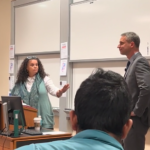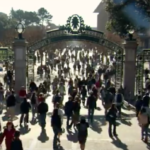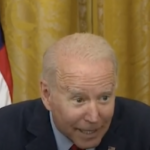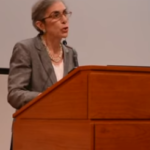Christmas at Katyn
 Dr. Paul Kengor download photo |
The people of Poland got an early Christmas present this year. It’s bittersweet but long awaited, and indeed a gift of sorts—and from an unlikely source: Russia. In Moscow, the State Duma, Russia’s legislature, passed a statement conceding Soviet responsibility for the Katyn Woods massacre, one of the 20th century’s worst war crimes.
The roots of this atrocity date to September 1939, when the Nazis and Bolsheviks jointly invaded, annihilated, and partitioned Poland. The Soviets seized thousands of Polish military officers as prisoners. Their fate was sealed on March 5, 1940 when Stalin signed their death warrant, condemning 21,857 of them to “the supreme penalty: shooting.” This we now know conclusively through the surviving NVKD document.
The officers were taken to three execution sites, the most infamous of which bears the namesake of the crime: the Katyn Forest, 12 miles west of Smolensk, Russia. There, these Polish men were slaughtered. The Bolsheviks covered their crime with a layer of dirt.
The apology from the Duma was something Poles waited decades to hear. It was something many of us who have studied and written about this incident have waited to hear. And it is too bad that Franklin Delano Roosevelt is not around to hear it.
FDR? Yes, FDR. Let me explain.
The Katyn massacre was first exposed by the Nazis in April 1943. By then, the Nazis had betrayed the Hitler-Stalin “Non-Aggression” Pact. They discovered the mass graves, and immediately converted the atrocity into a propaganda coup to split the Big Three Allies. The Soviets, in turn, claimed the Nazis had done the crime. Stalin and his goons attempted to pin the massacre on Hitler and his goons. Stuck in between was the civilized world, which sought to determine which devil did the deed.
FDR was among those stuck in between. Where would he stand?
Truth be told, FDR, who was terrific in stopping Hitler, was terribly naïve in assessing Stalin. He was often inclined to give “Uncle Joe” the benefit of the doubt. Nonetheless, he realized the need to take a close look. Thus, he dispatched George Earle, former Democratic governor of Pennsylvania, and a war hero, as special emissary to investigate Katyn.
In short order, Earle discerned the obvious, which was not what FDR wanted to hear. Not only had the president made it a habit to turn a blind eye toward things anti-Russian and anti-Stalin, but he needed Russia and Stalin to help vanquish the Nazis. This killing field created by America’s wartime ally would not look good to the American public.
Earle made his case: “About this Katyn massacre, Mr. President. I just cannot believe that the American president and so many people still think it is a mystery or have any doubt about it. Here are these pictures. Here are these affidavits and here is the invitation of the German government to let the neutral Red Cross go in there and make their examination. What greater proof could you have?”
FDR was wont to disagree: “George, the Germans could have rigged things up.”
Earle was frustrated. As he later put it, including in a Congressional inquiry, Roosevelt was adamant that the claims were “entirely German propaganda and a German plot.” The president said to his emissary: “I’m absolutely convinced that the Russians didn’t do this.” An amazed Earle responded: “Mr. President, I think this evidence is overwhelming.” It was.
It was also no surprise. The Soviets had been shipping captured Poles into Russian territory since 1939. This was hardly a secret, and was reported in sources like the New York Times (April 15, 1940).
But FDR refused to believe Earle. Even then, the debate wasn’t over. Earle saw FDR’s denial of Katyn as a microcosm of a more dangerous denial of the overall “Russian situation,” and how the USSR “deceived” too many Americans, including in the White House, which was being duped by “Uncle Joe” and his cronies.
FDR was getting annoyed with Earle. “George,” the president lectured, “you have been worried about Russia ever since 1942. Now let me tell you. I am an older man than you and I have had a lot of experience.” The Democratic governor again pressed the evidence, but to no avail.
George Earle later expressed his exasperation, saying he felt “hopeless.”
Alas, hope springs eternal. And for the Polish people, a people of unwavering faith, they never lost hope that the truth about their loved ones would be told, even while denied by quarters as high as the Oval Office. With the action of the Russian Duma, their faith and hope was finally rewarded, not by America’s wartime president but by the nation that perpetrated this heinous act.
At this season of faith and hope, may the souls of Katyn rest in peace.
V&V
Dr. Paul Kengor is professor of political science at Grove City College and executive director of The Center for Vision & Values at Grove City College. His books include “The Crusader: Ronald Reagan and the Fall of Communism” and the newly released “Dupes: How America’s Adversaries Have Manipulated Progressives for a Century.” The Center distributed this column.




